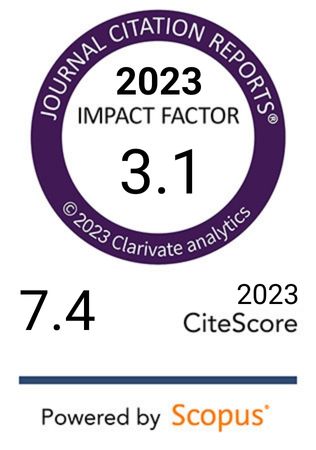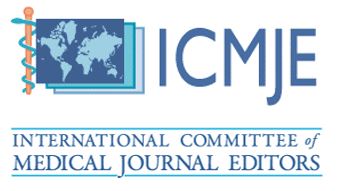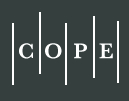Reviewer of the Month for October 2025: Corrado Tagliati, MD
Peer review is a fundamental element of scholarly publishing, ensuring the integrity, reliability, and ethical standards of scientific work. In appreciation of the vital contributions made by peer reviewers, the Biomolecules and Biomedicine journal proudly recognizes its Reviewer of the Month for October 2025. This accolade celebrates an outstanding individual whose expertise and commitment reflect the highest standards of peer review excellence.
Peer reviewers are essential to the publishing process, providing constructive feedback, thoughtful critiques, and valuable suggestions that help authors improve their manuscripts. By verifying that submissions are well-researched, relevant, and rooted in robust scientific methods, reviewers significantly elevate the quality of published research.
Each month, the BiomolBiomed Editorial Team honors a peer reviewer for their ongoing commitment to the review process. This award is granted to individuals who consistently provide comprehensive, detailed, and constructive evaluations—enhancing the quality of research manuscripts and promoting the progress of scientific discovery. Their work exemplifies the spirit of collaboration and the pursuit of excellence that drives advancement in academic and scientific fields.
Reviewer of the Month for October 2025:Biomolecules and Biomedicine is proud to recognize Corrado Tagliati, MD, Radiologist at AST Ancona (Italy), as its Reviewer of the Month for October 2025. Dr. Tagliati’s work spans advanced diagnostic imaging with particular impact in dermatologic ultrasound, computed tomography, and cystic fibrosis imaging, helping refine real-world clinical decision-making.
Dr. Tagliati is a physician–radiologist whose scholarly output includes 40+ peer-reviewed publications with hundreds of citations, covering topics from ultra-high-frequency dermatologic ultrasound to dose-efficient chest CT in adults with cystic fibrosis, and imaging of cardiac masses. Recent contributions include reviews and case studies on high-/ultra-high-frequency skin ultrasound and prurigo nodularis, as well as work on vertebral artery flow dynamics after aortic dissection surgery.
We had the opportunity to speak with Dr. Corrado Tagliati about his approach to peer review and his perspectives on the evolving landscape of academic publishing. In our conversation, he discussed his research interests and shared valuable insights into current trends and challenges within his field. Below are some highlights from our discussion:
Interview:1. Could you elaborate on your main research interests and any new directions or innovations that are particularly relevant in your field right now?
My main research interests are: ultrasound, dermatology, computed tomography, cystic fibrosis, cardiac and vascular imaging. Ultrasound is performed by a growing number of practitioners, and the number of diagnoses performed with ultrasound is growing: the main aim is to avoid performing too many computed tomography or magnetic resonance imaging if not strictly necessary for patient management in order to reduce population radiation exposure and waiting lists, the latter particularly in nations where there is a national health service which cover partially or completely the cost of the examinations. As regards dermatology, ultra-high frequency ultrasound will help detect and manage dermatologic diseases, particularly hidradenitis suppurativa and skin neoplastic lesions, the latter particularly in presurgical setting. As regards cystic fibrosis, reducing radiation exposure is necessary as prevalence is growing and predictive survival is increasing thanks to newer drugs such as triple-combination CFTR modulating therapy: newer computed tomography techniques and photon counting will help reach this goal; moreover, higher magnetic resonance imaging utilization in daily clinical practice could help too. Photon-counting computed tomography will clearly enhance non-invasive coronary imaging usefulness for atherosclerotic and non-atheroscletic diseases diagnosis; as regards the former, this new computed tomography scanner is able to precisely evaluate calcific plaque degree of stenosis and plaque composition. 2. What strategies do you use to ensure that your feedback is both fair and useful to the authors? I think authors need to be respected. It is more important to give them clear advice to improve their manuscripts instead of letting them feel incompetent and unfit to write nice articles. Frequently frankly speaking on how it is possible to really improve a manuscript will have better results than requesting impossible things from the authors. 3. How do you think the peer-review process can be improved in order to better serve the needs of the scientific community? I do not know how peer-review can be improved to better serve the needs of the scientific community. Perhaps, the importance of peer reviewer work could be better valued, but I do not know exactly how this could be realized.We are honored to acknowledge Dr. Tagliati for his exceptional efforts, which reflect the high level of excellence and dedication that motivates fellow reviewers. His commitment highlights the vital importance of peer review in maintaining the integrity and quality of scientific publications. We urge the academic community to continue supporting and upholding this fundamental aspect of scholarly work.









